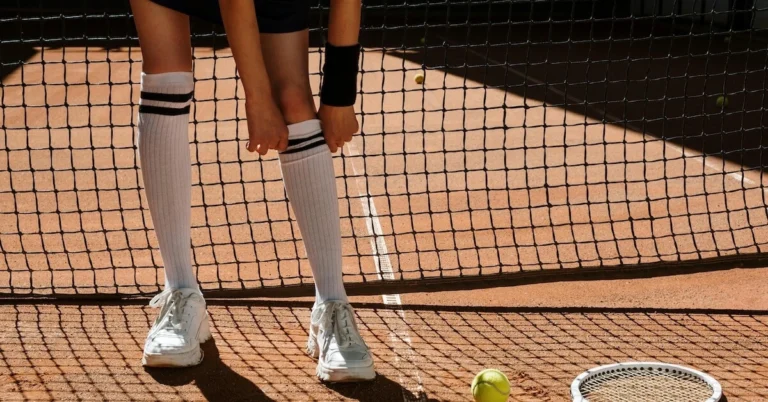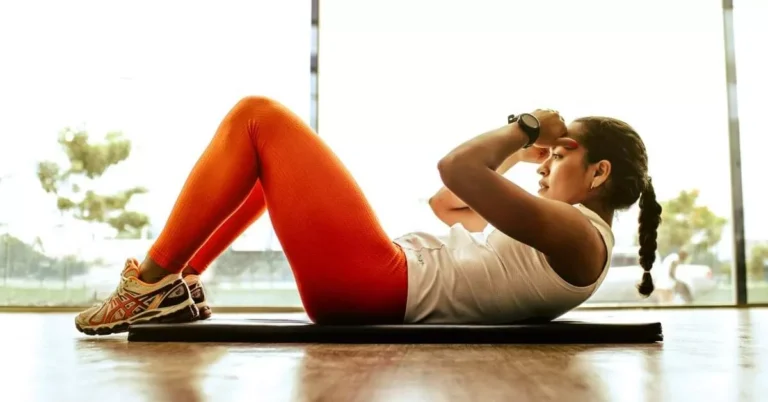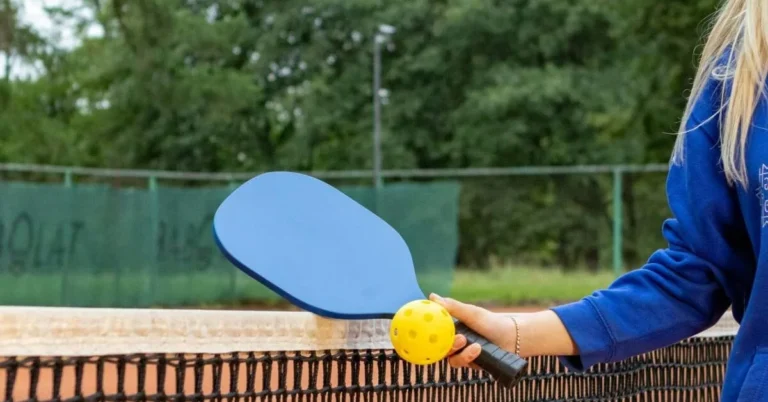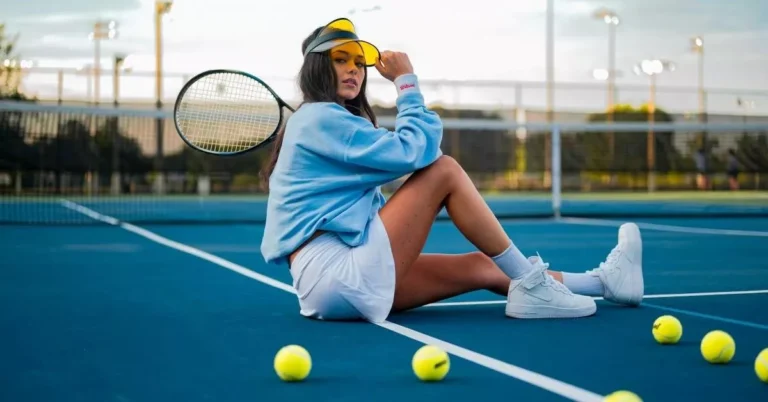Are you a beginner in tennis doubles and looking for ways to improve your game? Tennis doubles is a fun and exciting game that requires a different set of skills and strategies than singles tennis. In tennis doubles, you play with a partner, and the court is wider, which means you have to cover more ground. Additionally, you need to communicate effectively with your partner to succeed in tennis doubles.
One of the most important aspects of tennis doubles is strategy. Knowing the right strategies can help you win more matches and improve your overall game. There are several doubles strategies that you can use to your advantage, such as positioning, communication, and shot selection. By mastering the tennis doubles strategy, you can become a more confident and knowledgeable doubles player. In this article, we will cover the best tennis doubles strategy for beginners to help you take your game to the next level.
1. Tennis Doubles Strategy: Understanding the Basics
If you’re new to tennis doubles, it’s important to understand the basics before diving into more advanced strategies. Tennis doubles involves two players on each side of the court, with each player having a specific role during each game. The server must serve out the full game, and the service returner must receive serves until the game is over..
When it comes to positioning, each player is responsible for half of their side of the court. It’s important to know where to position yourself, especially when returning serves and hitting groundstrokes. The net player should be ready to volley any balls that come their way, while the baseline player should be prepared to hit groundstrokes and cover the back of the court.
In tennis doubles, net play is crucial. Getting both players on the same team to the net as quickly as possible can end the point and give your team a significant advantage. Volleying makes the balls move quicker and harder, leaving less space for the opponents to get around your team.
As a doubles player, it’s important to know your strengths and weaknesses, as well as those of your partner. This can help you make strategic decisions during the game, such as who should serve and volley, and who should stay back.
2. Formations
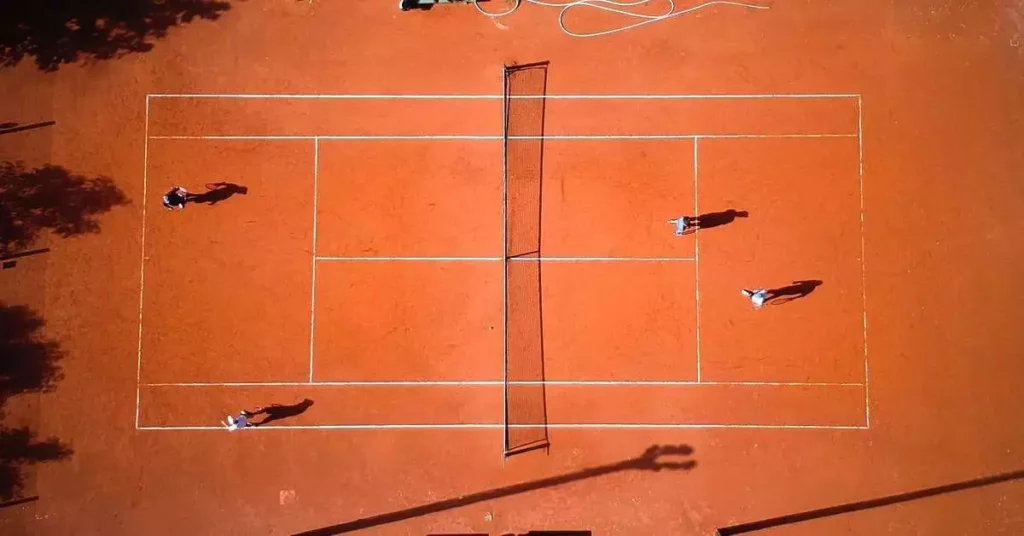
When playing tennis doubles, it’s crucial to have a solid formation that allows both players to communicate and execute the effective tennis doubles strategy. Here are three popular doubles formations that you can use as a beginner.
Standard Doubles Formation
The standard doubles formation is the most commonly used formation in tennis doubles. In this formation, one player stands at the net while the other player stands at the baseline. The player at the baseline is responsible for hitting groundstrokes and returning serves, while the player at the net is responsible for volleying and intercepting any shots that come their way.
This formation is effective because it allows both players to cover a lot of ground on the court. The baseline player can hit powerful groundstrokes to keep their opponents on the defensive, while the net player can use their quick reflexes to put away any shots that come their way.
Australian Formation
The Australian formation is a variation of the standard doubles formation. In this formation, both players stand at the baseline, with one player positioned slightly to the left of the center line and the other player positioned slightly to the right.
This formation is effective because it allows both players to hit groundstrokes from their preferred side of the court. For example, if you’re a right-handed player, you’ll be hitting your forehand from the right side of the court, which is your stronger side. This formation can be particularly effective against opponents who struggle with cross-court shots.
I Formation
The I formation is a more advanced doubles formation that requires good communication between both players. In this formation, one player stands at the net while the other player stands at the baseline, but the net player positions themselves in the center of the court, rather than at the net.
At the start of the point, the net player will move to one side of the court, forcing the opponents to hit their return shot to the other side. The baseline player will then move to cover the side of the court where the net player is positioned, while the net player moves to cover the other side of the court.
This formation can be effective against opponents who struggle with returns, as it puts pressure on them to hit a shot that clears the net player. However, it requires good communication and coordination between both players to execute effectively.
3. Effective Communication
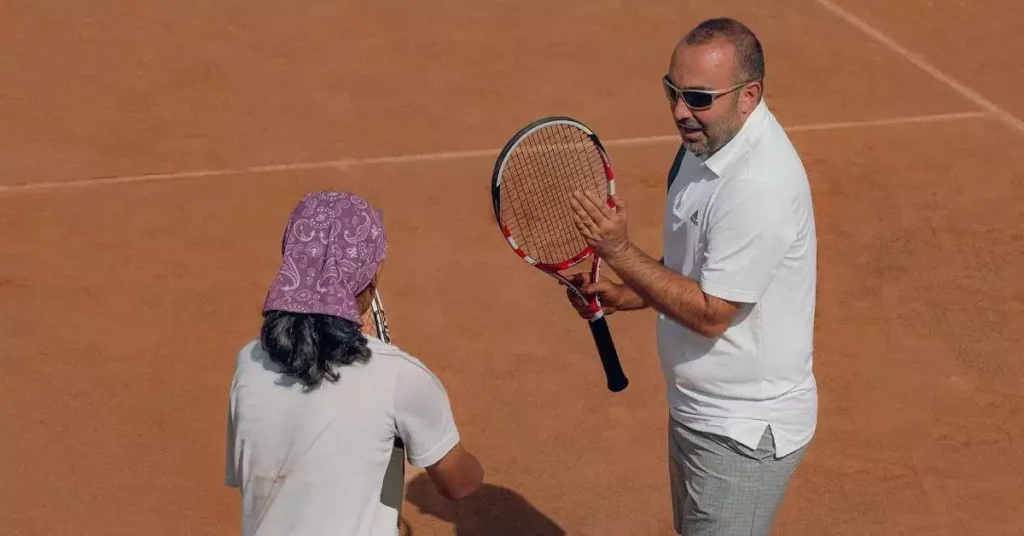
Effective communication is essential in tennis doubles. You and your partner need to communicate well to make quick decisions and coordinate your movements effectively. Good communication can make the difference between winning and losing a match.
There are different ways to communicate in tennis doubles, but the most common ones are verbal communication and hand signals. Verbal communication involves talking to your partner during the match. You can use simple phrases like “mine,” “yours,” “switch,” “poach,” and “back” to communicate your intentions. It’s important to speak clearly and loudly enough for your partner to hear you.
Hand signals are also a useful way to communicate in tennis doubles. Hand signals are non-verbal gestures that you and your partner can use to indicate your intentions. Some common hand signals include pointing to the side you want your partner to cover, making a fist to indicate that you will take the shot, and waving your hand to signal your partner to move forward or back.
It’s important to establish a system of communication with your partner before the match. You should discuss which signals you will use and what they mean. You should also agree on who will cover which areas of the court and what your tennis doubles strategy will be.
During the match, it’s important to maintain good communication with your partner. You should keep talking to each other and use hand signals to indicate your intentions. If you make a mistake or your partner misses a shot, don’t blame each other. Instead, encourage each other and stay positive.
4. Positioning

Positioning is a crucial aspect of tennis doubles strategy. In singles tennis, you are responsible for the entire court, but in doubles, you share the court with your partner. Each player covers half the court, and good positioning ensures that you’re in the right place at the right time to make a shot.
Your positioning depends on several factors, including your partner’s strengths and weaknesses, your opponents’ playing style, and the court conditions. You should always communicate with your partner and adjust your positioning accordingly.
Adjusting to Opponents
Your positioning should also depend on your opponents’ playing style. If they’re hitting a lot of shots towards the net, you should move closer to the net to intercept their shots. If they’re hitting a lot of shots towards the baseline, you should move back to cover more of the court.
5. Stay out of No Man’s Land
In tennis doubles, the area between the service line and the baseline is known as the “No Man’s Land.” It’s called that for a reason – it’s a spot on the court where you don’t want to be caught standing. Read our guide to get to know the names of the tennis court lines: Names of Tennis Court Lines: A Comprehensive Guide (2023) (itscourttime.com).
If you find yourself in No Man’s Land, you’ll be in a vulnerable position. You’ll have less time to react to shots, and your opponents will have more angles to hit to. This can make it difficult for you to hit effective shots, and you’ll be more likely to make errors.
To avoid getting caught in No Man’s Land, it’s important to be aware of your positioning on the court. Make sure you stay behind the baseline when your opponents are hitting from the back of the court. When your opponents move forward to hit volleys, move back to give yourself more time to react.
It’s also important to communicate with your partner to ensure that you’re both covering the court effectively. If your partner is covering one side of the court, make sure you’re covering the other side. This will help you avoid leaving any gaps in your defense that your opponents can exploit.
In general, it’s best to stay close to the net when you’re playing doubles. This will give you more opportunities to hit volleys and put pressure on your opponents. However, you should still be aware of your positioning and avoid getting caught in No Man’s Land.
6. Identifying and Utilizing Strengths and Weaknesses
It is essential to understand that you and your partner will have different strengths and weaknesses. Identifying them can help you make better decisions during the game and adjust your tennis doubles strategy accordingly.
To start, assess your individual abilities and skills. Are you better at serving or returning? Do you have a strong forehand or backhand? Once you have identified your strengths, communicate them to your partner, so they know what to expect and how to support you.
Next, evaluate your partner’s abilities and skills. If your partner has a strong net game, consider playing more aggressively and aiming for the opponent’s feet to force them to hit up. Conversely, if your partner struggles with volleys, try to keep them back and focus on keeping the ball in play.
It’s also important to recognize your team’s weaknesses. For example, if one of you is a weaker player, don’t put all the pressure on them. Instead, focus on playing to your strengths and supporting each other. Encourage your partner and offer constructive feedback to help them improve.
During the game, be prepared to make adjustments as necessary. If your opponents are consistently hitting to your weaker side, try switching sides with your partner to take advantage of their strengths. If you’re struggling to return a particular serve, communicate with your partner and adjust your positioning to give yourself a better chance.
7. Stay in Motion
One of the most important things to remember in tennis doubles is to keep moving. You don’t want to be caught flat-footed when the ball comes your way. So, make sure you stay on your toes and be ready to move in any direction.
Here are a few tips to help you stay in motion during a doubles match:
- Anticipate the ball: Try to read your opponent’s shots and anticipate where the ball is going to go. This way, you can start moving towards the ball before it even crosses the net.
- Stay on your toes: Keep your weight on the balls of your feet and be ready to move in any direction. This will help you react quickly to the ball and get into position for your shots.
- Move as a team: Work with your partner to cover the court and stay in motion together. This means communicating with each other and moving in sync to cover as much ground as possible.
- Don’t stop moving: Even when you’re not directly involved in the point, keep moving. This will help you stay loose and ready to jump into action when the ball comes your way.
By staying in motion, you’ll be able to cover more ground, react quickly to the ball, and put yourself in a better position to make winning shots. So, keep moving and stay on your toes!
8. Tennis Doubles Strategy Against Lobs
As a beginner in tennis doubles, you’ll quickly realize that lobs can be a real problem. A lob is a high, arcing shot that is meant to go over your head and land deep in the court. If you’re not prepared for it, it can be a difficult shot to return. Here is the tennis doubles strategy to help you deal with lobs.
Stay Alert
The first thing you need to do is stay alert. Always be aware of where your opponents are on the court. If you see one of them preparing to hit a lob, be ready to move back and prepare for the shot.
Move Back
When you see a lob coming, move back towards the baseline. This will give you more time to prepare for the shot and make it easier to return. If you’re too close to the net, you won’t have enough time to get back and make a good return.
Use Your Partner
If you’re having trouble with lobs, don’t be afraid to use your partner. Have them move back and prepare to hit the lob if it comes. This will give you more time to get back into position and make a good return.
Hit a Lob Yourself
Another tennis doubles strategy is to hit a lob yourself. This can be a good way to take control of the point and put your opponents on the defensive. Just be sure to hit the lob high enough so that it goes over your opponents’ heads and lands deep in the court.
Practice Your Footwork
Finally, practice your footwork. The key to returning lobs is to be in the right position. This means moving quickly and being able to change direction quickly. Practice moving back towards the baseline and then coming forward to make the return.
9. Cover the Sidelines
Covering the sidelines is an essential part of playing tennis doubles. You need to be able to defend and attack the sidelines to win points. Here are some tips on how to cover the sidelines effectively:
Positioning
Positioning is key when it comes to covering the sidelines. You need to be in the right position to hit the ball and cover the court. When your partner is serving, you should be positioned near the center of the court, slightly behind the service line. This position allows you to cover the middle of the court and the sidelines.
Communication
Communication is crucial when it comes to covering the sidelines. You need to communicate with your partner to ensure that you are both covering the court effectively. If your partner is covering the middle of the court, you should be covering the sidelines. If your partner is covering the sidelines, you should be covering the middle of the court. Make sure to communicate with your partner before and during the point to avoid confusion.
Footwork
Footwork is essential when it comes to covering the sidelines. You need to be able to move quickly and efficiently to cover the court. When the ball is hit to the sidelines, you should take small, quick steps to get into position. Make sure to stay on the balls of your feet and be ready to move in any direction.
Tennis Lines
The tennis lines can be used as a guide when covering the sidelines. You should try to position yourself so that you are just inside the sideline. This position allows you to hit the ball with power and accuracy while still staying in bounds. Make sure to practice hitting balls that are close to the sidelines to improve your accuracy.
10. Poaching
Poaching is a tennis doubles strategy where one player moves forward to the net to intercept the ball hit by the opponent. It is a great way to put pressure on your opponents and win points quickly. However, it requires good timing and communication with your partner.
To effectively poach, you need to pay attention to your opponent’s position and the type of shot they are hitting. If your opponent is hitting a weak shot or is out of position, it is a good opportunity to poach and put the ball away.
Communication with your partner is key when poaching. You should signal to your partner that you are moving forward to the net so that they can cover the court behind you. This will prevent your opponents from hitting a lob over your head.
It is important to note that poaching is a risky tennis doubles strategy. If you mistime your move or your opponent hits a good shot, you may be left out of position, which can lead to a lost point. Therefore, it is important to practice poaching with your partner and develop good timing and communication skills.
Here are some tips for effective poaching:
- Move forward to the net when your opponent is hitting a weak shot or is out of position.
- Signal to your partner that you are poaching so that they can cover the court behind you.
- Practice poaching with your partner to develop good timing and communication skills.
- Be prepared to move quickly and adjust your position if your opponent hits a good shot.
11. Serving and Returning Strategies

Serving Strategy
As a beginner in tennis doubles, you should focus on serving consistently rather than hitting a big serve. Your primary goal is to get the ball in play and avoid double faults. Stand closer to the center of the baseline and aim for the middle of the service box. This will give you a better chance of hitting a good first serve and putting pressure on your opponents.
When serving from the ad court, aim for the T on the service box, and when serving from the deuce court, aim for the corner of the service box. These spots will give you the best chance of hitting an effective serve and setting up your partner for an easy volley.
Returning Strategy
Returning in doubles is different from singles because you have less court to cover. Stand a little closer to the doubles alley to cover a wider serve. Your goal should be to get the ball back in play and give your partner a chance to hit a winning shot.
When returning from the ad court, aim for the server’s backhand, and when returning from the deuce court, aim for the server’s forehand. This will give you a better chance of getting the ball back in play and putting pressure on your opponents.
Return Serve Aggressively
Returning the serve aggressively means hitting the ball hard and low to your opponent’s feet. This tennis doubles strategy is effective because it makes it difficult for your opponents to hit an effective volley. However, it requires good timing and footwork.
12. Net Play
Net play is an essential part of tennis doubles and can help you win points quickly. If you’re playing doubles, you should aim to get to the net as quickly as possible. When you’re at the net, you can use your volleying skills to put pressure on the other team and force them to make mistakes.
Here are some tips to help you improve your net play:
- Move forward quickly: After you hit your shot, move forward towards the net as quickly as possible. This will give you more time to prepare for the next shot and put pressure on the other team.
- Use your positioning: When you’re at the net, try to position yourself in the center of the court. This will give you more coverage and make it harder for the other team to get the ball past you.
- Be aggressive: When you’re at the net, be aggressive and try to put pressure on the other team. Use your volleys to hit the ball hard and force the other team to make mistakes.
- Stay low: When you’re at the net, stay low and be ready to move quickly. This will help you react to shots and make it easier to hit volleys.
- Communicate with your partner: Communication is key in tennis doubles. Make sure you’re communicating with your partner and letting them know where you’re going to be on the court.
Remember, net play takes practice. The more you practice, the better you’ll get. So get out there and start practicing your net play today!
13. Volley Techniques
In tennis doubles, the volley is a crucial shot that can help you win points quickly. It’s a shot where you hit the ball before it bounces on your side of the court. Here are some tips to improve your volley technique:
1. Start with the right grip
The continental grip is the most common grip used for volleys. It allows you to switch easily between forehand and backhand shots without having to adjust your grip. Place your index finger on the third bevel of the racket handle and your thumb on the opposite bevel.
2. Keep your eye on the ball
It’s important to keep your eye on the ball at all times when volleying. This will help you make better contact with the ball and control its direction. Try to anticipate where the ball will go and move your body accordingly.
3. Move towards the ball
Don’t wait for the ball to come to you. Move towards the ball so that you can hit it at the peak of its bounce. This will give you more control over the shot and prevent your opponent from hitting a passing shot.
4. Use your non-dominant hand
Your non-dominant hand can be used to help you balance and position your body. Use it to point in the direction you want to hit the ball and to help you recover after the shot.
5. Practice your footwork
Good footwork is essential for a successful volley. Practice moving forward, backward, and sideways quickly and smoothly. This will help you get into position to hit the ball and recover after the shot.
6. Mix up your shots
Don’t always hit the same type of volley. Mix it up by hitting high volleys, low volleys, and angled volleys. This will keep your opponents guessing and make it harder for them to anticipate your shots.
By improving your volley technique, you can become a more effective doubles player and win more points. Practice these tips and you’ll be hitting clean volleys in no time!
Improving Doubles Skills
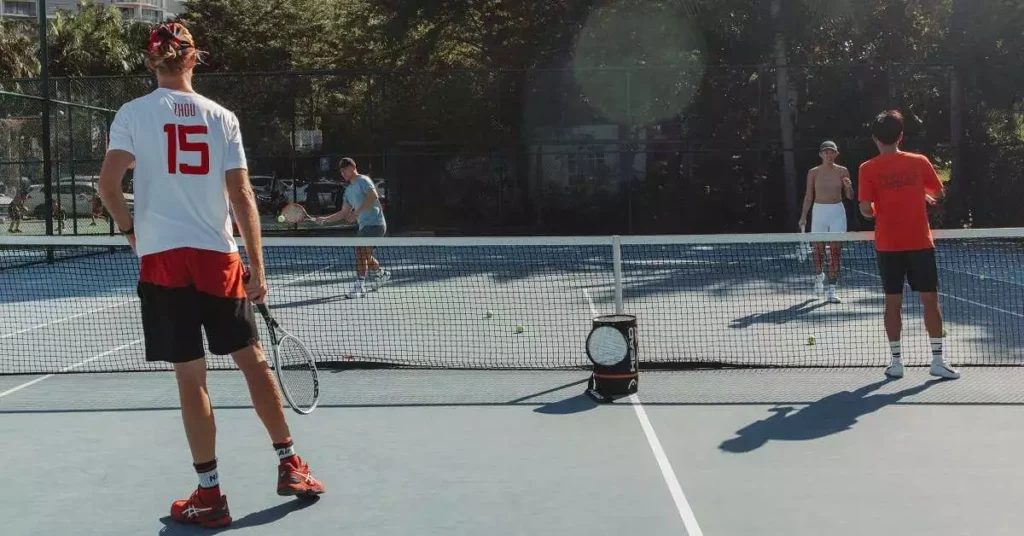
If you’re new to tennis doubles, it can be overwhelming to learn all the strategies and skills required to succeed. However, with practice and patience, you can improve your doubles skills and become a better player.
One of the most important skills in tennis doubles is footwork. You need to be able to move quickly and efficiently around the court to cover your side of the court and make shots. Practice your footwork by doing drills that focus on lateral movement, such as shuffling side to side or running diagonal patterns across the court.
Another key skill is reflexes. In tenis doubles, the ball moves much faster than in singles, so you need to be able to react quickly to shots. Practice your reflexes by doing drills that involve quick reaction times, such as hitting balls that are fed to you from a machine or partner.
Decision making is also crucial in tennis doubles. You need to be able to quickly assess the situation and make the best shot or movement to win the point. Practice decision making by playing practice matches with a partner or coach and focusing on making smart shots and movements.
Adjustments are also important in tennis doubles. You need to be able to adjust your position and shots based on the movements of your partner and opponents. Practice making adjustments by playing matches and focusing on communication with your partner and being aware of your opponents’ movements.
FAQ
How do I get better at tennis doubles?
Getting better at tennis doubles requires practice and understanding of the game. Here are some tips to help you improve:Getting better at tennis doubles requires practice and understanding of the game. Here are some tips to help you improve:
– Work on your footwork to move quickly around the court.
– Practice your serves and returns to keep the ball in play.
– Communicate with your partner to coordinate your movements on the court.
– Learn different strategies and tactics for doubles play.
What are 3 basic strategies for positioning in doubles play?
Positioning is crucial in doubles play. The three basic strategies for positioning are the Standard Formation, the Australian Formation and the I Formation.
What is the basic tennis doubles strategy?
The basic tennis doubles strategy is to work together with your partner to cover the court and put pressure on the opponents. Communication, movement, net play, and positioning are some key elements of tennis doubles strategy.
What is the most common strategy used in doubles play?
The most common tennis doubles strategy is to take control of the net. This means moving forward to the net whenever possible and using volleys and overheads to finish points. To do this successfully, you need to communicate with your partner and move quickly and efficiently around the court.
We’re curious about your experience with tennis doubles strategy. What tips or tactics have you found most effective for beginners? Share your insights and recommendations in the comments below and let’s help each other elevate our doubles game to the next level!



